Category: Real men

Now the real speech below:
Be seated.
Men, all this stuff you hear about America not wanting to fight, wanting to stay out of the war, is a lot of horse dung. Americans love to fight.
All real Americans love the sting and clash of battle. When you were kids, you all admired the champion marble shooter, the fastest runner, the big-league ball players and the toughest boxers. Americans love a winner and will not tolerate a loser. Americans play to win all the time. I wouldn’t give a hoot in hell for a man who lost, and laughed.
That’s why Americans have never lost and will never lose a war. The very thought of losing is hateful to America. Battle is the most significant competition in which a man can indulge. It brings out all that is best and it removes all that is base.
You are not all going to die. Only two percent of you right here today would be killed in a major battle. Every man is scared in his first action. If he says he’s not, he’s a goddamn liar. But the real hero is the man who fights even though he’s scared. Some men will get over their fright in a minute under fire, some take an hour, and for some it takes days. But the real man never lets his fear of death overpower his honor, his sense of duty to his country, and his innate manhood.
All through your army career you men have bitched about what you call ‘this chicken-shit drilling.’ That is all for a purpose—to ensure instant obedience to orders and to create constant alertness. This must be bred into every soldier. I don’t give a fuck for a man who is not always on his toes. But the drilling has made veterans of all you men. You are ready! A man has to be alert all the time if he expects to keep on breathing. If not, some German son-of-a-bitch will sneak up behind him and beat him to death with a sock full of shit.
There are four hundred neatly marked graves in Sicily, all because one man went to sleep on the job—but they are German graves, because we caught the bastard asleep before his officer did.
An army is a team. It lives, eats, sleeps, and fights as a team. This individual hero stuff is bullshit. The bilious bastards who write that stuff for the Saturday Evening Post don’t know any more about real battle than they do about fucking. Now we have the finest food and equipment, the best spirit and the best men in the world. You know, by God, I actually pity these poor bastards we’re going up against, by God I do.
All the real heroes are not storybook combat fighters. Every single man in the army plays a vital role. So don’t ever let up. Don’t ever think that your job is unimportant. What if every truck driver decided that he didn’t like the whine of the shells and turned yellow and jumped headlong into a ditch? That cowardly bastard could say to himself, ‘Hell, they won’t miss me, just one man in thousands.’ What if every man said that? Where in the hell would we be then? No, thank God, Americans don’t say that. Every man does his job. Every man is important.
The ordnance men are needed to supply the guns, the quartermaster is needed to bring up the food and clothes for us because where we are going there isn’t a hell of a lot to steal. Every last damn man in the mess hall, even the one who boils the water to keep us from getting the GI shits, has a job to do.
Each man must think not only of himself, but think of his buddy fighting alongside him. We don’t want yellow cowards in the army. They should be killed off like flies. If not, they will go back home after the war, goddamn cowards, and breed more cowards. The brave men will breed more brave men. Kill off the goddamn cowards and we’ll have a nation of brave men.
One of the bravest men I saw in the African campaign was on a telegraph pole in the midst of furious fire while we were moving toward Tunis. I stopped and asked him what the hell he was doing up there. He answered, ‘Fixing the wire, sir.’ ‘Isn’t it a little unhealthy up there right now?’ I asked. ‘Yes sir, but this goddamn wire has got to be fixed.’ I asked, ‘Don’t those planes strafing the road bother you?’ And he answered, ‘No sir, but you sure as hell do.’
Now, there was a real soldier. A real man. A man who devoted all he had to his duty, no matter how great the odds, no matter how seemingly insignificant his duty appeared at the time.
And you should have seen the trucks on the road to Gabès. Those drivers were magnificent. All day and all night they crawled along those son-of-a-bitch roads, never stopping, never deviating from their course with shells bursting all around them. Many of the men drove over 40 consecutive hours. We got through on good old American guts. These were not combat men. But they were soldiers with a job to do. They were part of a team. Without them the fight would have been lost.
Sure, we all want to go home. We want to get this war over with. But you can’t win a war lying down. The quickest way to get it over with is to get the bastards who started it. We want to get the hell over there and clean the goddamn thing up, and then get at those purple-pissing Japs.[a]
The quicker they are whipped, the quicker we go home. The shortest way home is through Berlin and Tokyo. So keep moving. And when we get to Berlin, I am personally going to shoot that paper-hanging son-of-a-bitch Hitler.
When a man is lying in a shell hole, if he just stays there all day, a Boche will get him eventually. The hell with that. My men don’t dig foxholes. Foxholes only slow up an offensive. Keep moving. We’ll win this war, but we’ll win it only by fighting and showing the Germans that we’ve got more guts than they have or ever will have. We’re not just going to shoot the bastards, we’re going to rip out their living goddamned guts and use them to grease the treads of our tanks. We’re going to murder those lousy Hun cocksuckers by the bushel-fucking-basket.
Some of you men are wondering whether or not you’ll chicken out under fire. Don’t worry about it. I can assure you that you’ll all do your duty. War is a bloody business, a killing business.
The Nazis are the enemy. Wade into them, spill their blood or they will spill yours. Shoot them in the guts. Rip open their belly. When shells are hitting all around you and you wipe the dirt from your face and you realize that it’s not dirt, it’s the blood and guts of what was once your best friend, you’ll know what to do.
I don’t want any messages saying ‘I’m holding my position.’ We’re not holding a goddamned thing. We’re advancing constantly and we’re not interested in holding anything except the enemy’s balls. We’re going to hold him by his balls and we’re going to kick him in the ass; twist his balls and kick the living shit out of him all the time. Our plan of operation is to advance and keep on advancing. We’re going to go through the enemy like shit through a tinhorn.
There will be some complaints that we’re pushing our people too hard. I don’t give a damn about such complaints. I believe that an ounce of sweat will save a gallon of blood. The harder we push, the more Germans we kill. The more Germans we kill, the fewer of our men will be killed. Pushing harder means fewer casualties.
I want you all to remember that. My men don’t surrender. I don’t want to hear of any soldier under my command being captured unless he is hit. Even if you are hit, you can still fight. That’s not just bullshit either. I want men like the lieutenant in Libya who, with a Luger against his chest, swept aside the gun with his hand, jerked his helmet off with the other and busted the hell out of the Boche with the helmet. Then he picked up the gun and he killed another German. All this time the man had a bullet through his lung. That’s a man for you!
Don’t forget, you don’t know I’m here at all. No word of that fact is to be mentioned in any letters. The world is not supposed to know what the hell they did with me. I’m not supposed to be commanding this army. I’m not even supposed to be in England. Let the first bastards to find out be the goddamned Germans. Some day, I want them to rise up on their piss-soaked hind legs and howl ‘Ach! It’s the goddamned Third Army and that son-of-a-bitch Patton again!’
Then there’s one thing you men will be able to say when this war is over and you get back home. Thirty years from now when you’re sitting by your fireside with your grandson on your knee and he asks, ‘What did you do in the great World War Two?’ You won’t have to cough and say, ‘Well, your granddaddy shoveled shit in Louisiana.’ No sir, you can look him straight in the eye and say ‘Son, your granddaddy rode with the great Third Army and a son-of-a-goddamned-bitch named George Patton!’
All right, you sons of bitches. You know how I feel. I’ll be proud to lead you wonderful guys in battle anytime, anywhere. That’s all
Soon after leaving public office, the 26th President of the United States Theodore Roosevelt (1901-1909) delivered a world-famous speech in France, a part of which later became one of his most often quoted. Referred to as “The Man in the Arena,” it provided insight into the perspective of combatants who perform well under pressure.
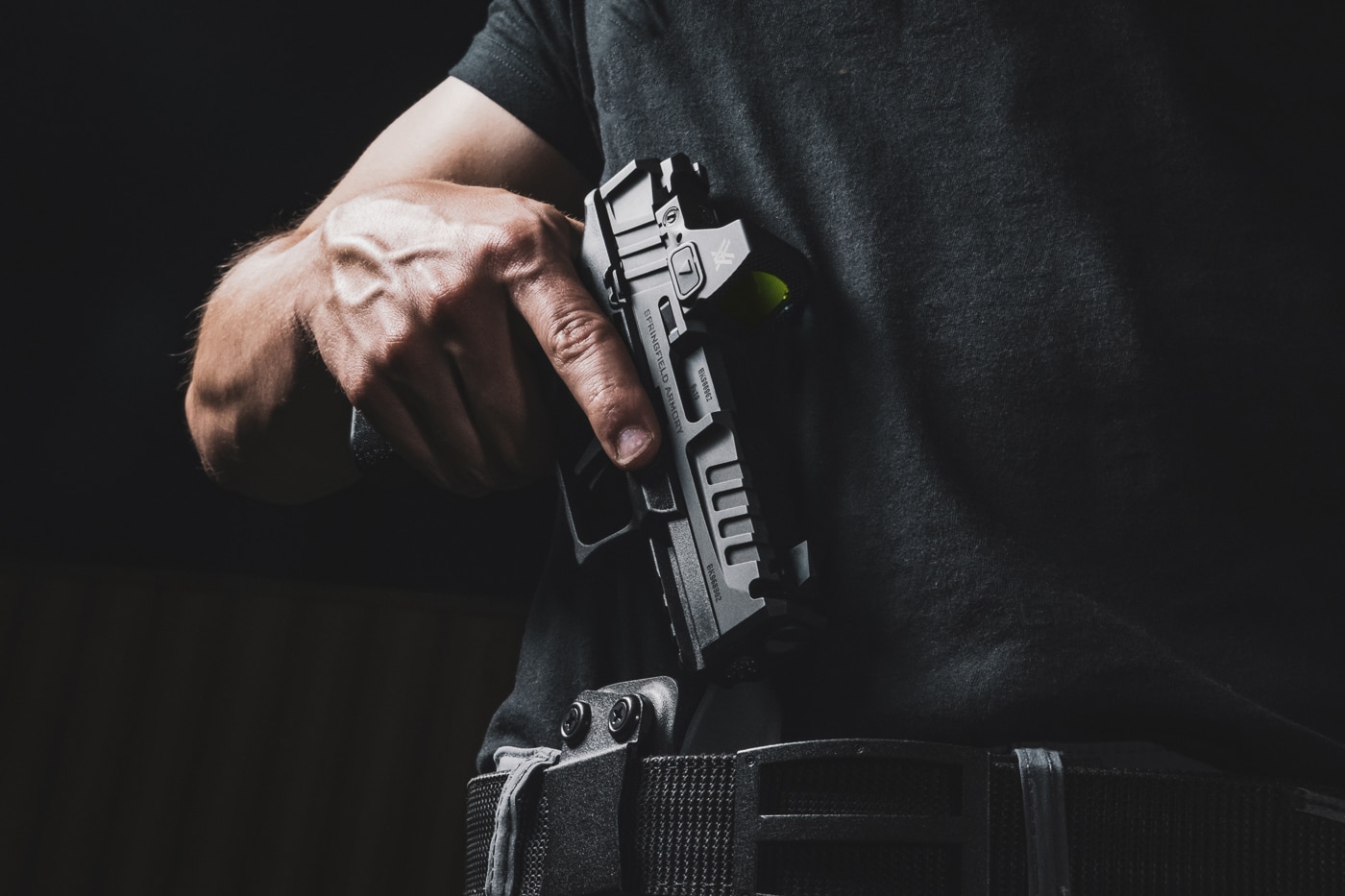
“It is not the critic who counts; not the man who points out how the strong man stumbles, or where the doer of deeds could have done them better.
The credit belongs to the man who is actually in the arena, whose face is marred by dust and sweat and blood; who strives valiantly; who errs, who comes up short again and again, because there is no effort without error and shortcoming; but who does actually strive to do the deeds; who knows great enthusiasms, the great devotions; who spends himself in a worthy cause; who at the best knows in the end the triumph of high achievement, and who at the worst, if he fails, at least fails while daring greatly, so that his place shall never be with those cold and timid souls who neither know victory nor defeat.”
What Roosevelt so eloquently shed light upon was the depth of human will, self-determination, and mental fortitude it takes to perform under extreme duress. What was true at the turn of the 20th century and later proven by the belligerents of both world wars, is true to this very day, that only the strong survive.
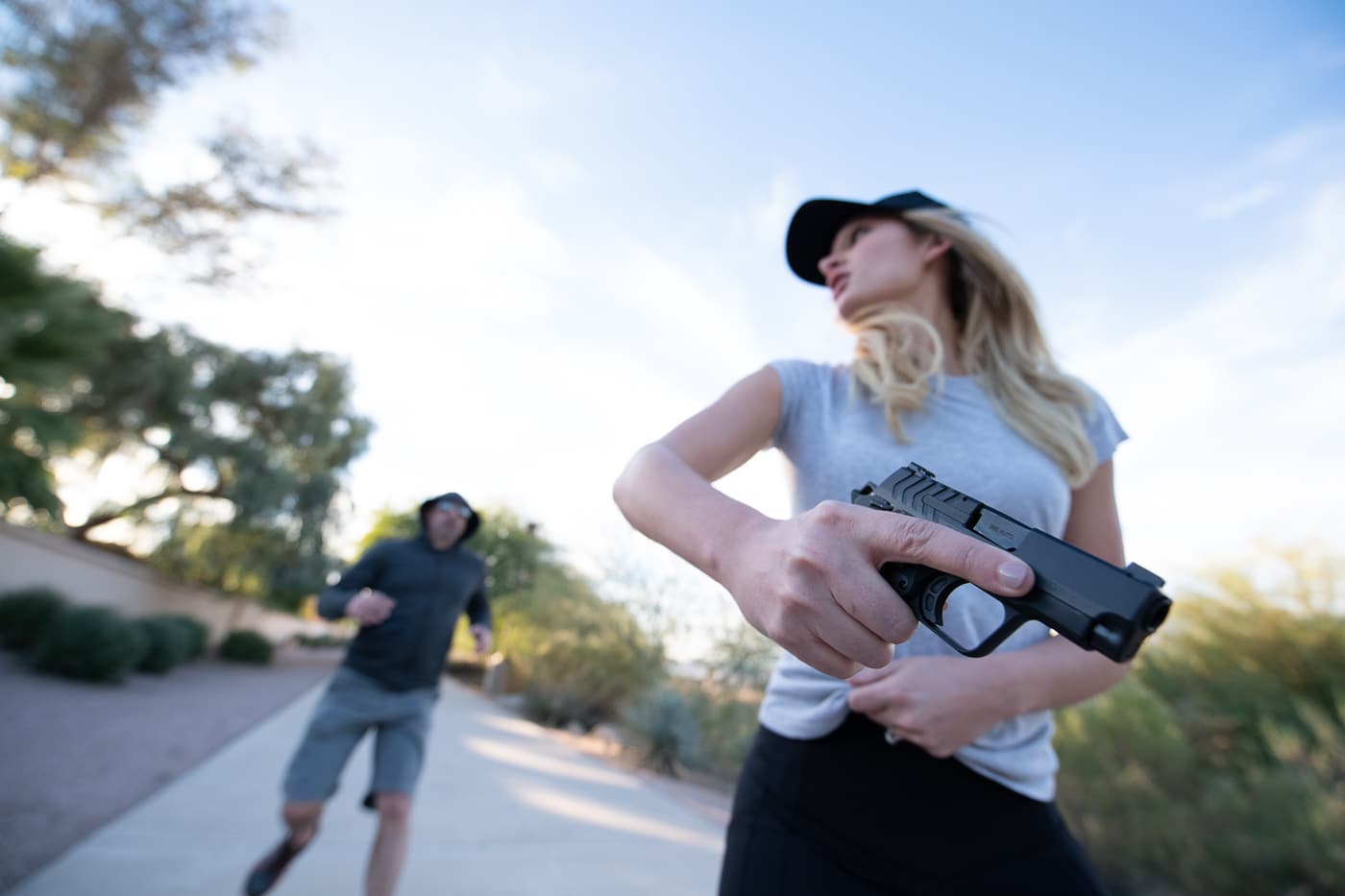
When Wyatt Earp was asked about winning gunfights, he attributed his success to, “Going into action with the greatest speed which a man’s muscles are capable, but mentally unflustered.” Given the critical importance of staying cool under pressure, it is no secret that the likes of war fighters and law enforcement professionals think clearer and perform better in violent physical altercations.
Back in the day, the term “steely-eyed gunfighter” was attributed to those gunslingers who possessed both the physical skills and mental strength needed to ply their trade. Physical prowess, although certainly a contributing factor, must be preceded by an unyielding and pervasive mental fortitude afforded only to those possessing coolness of mind referred to by legendary gunfighter Wyatt Earp as “mentally unflustered.”
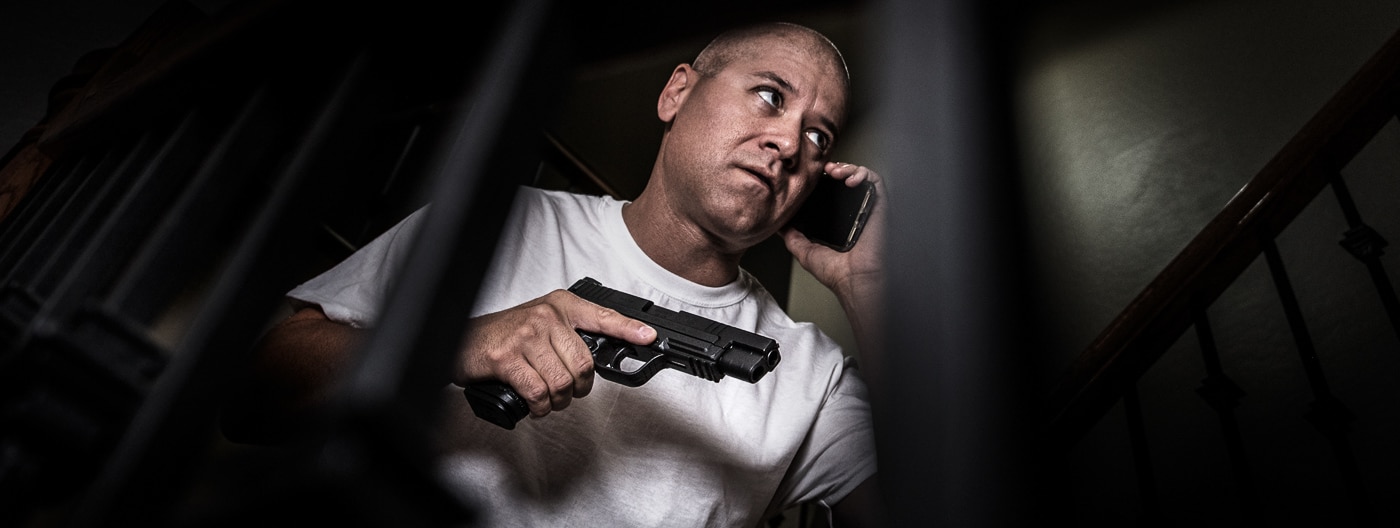
Fast forward to today, what three things can you do to be mentally unflustered should you find yourself needing to win a fight? Let’s begin with competency, consistency, and inoculation.
Competency
Think about going in for critical heart or eye surgery. Odds are that you would want a seasoned doctor that has about a thousand or so of these operations under his belt — preferably performing 20 of these a week for the past 20 years. When it comes to something that serious, you would place your trust in the most experienced physically and mentally competent practitioner. When it comes to surviving extreme physical violence, why wouldn’t you want that same competency to ensure your safety and that of those you care most about?
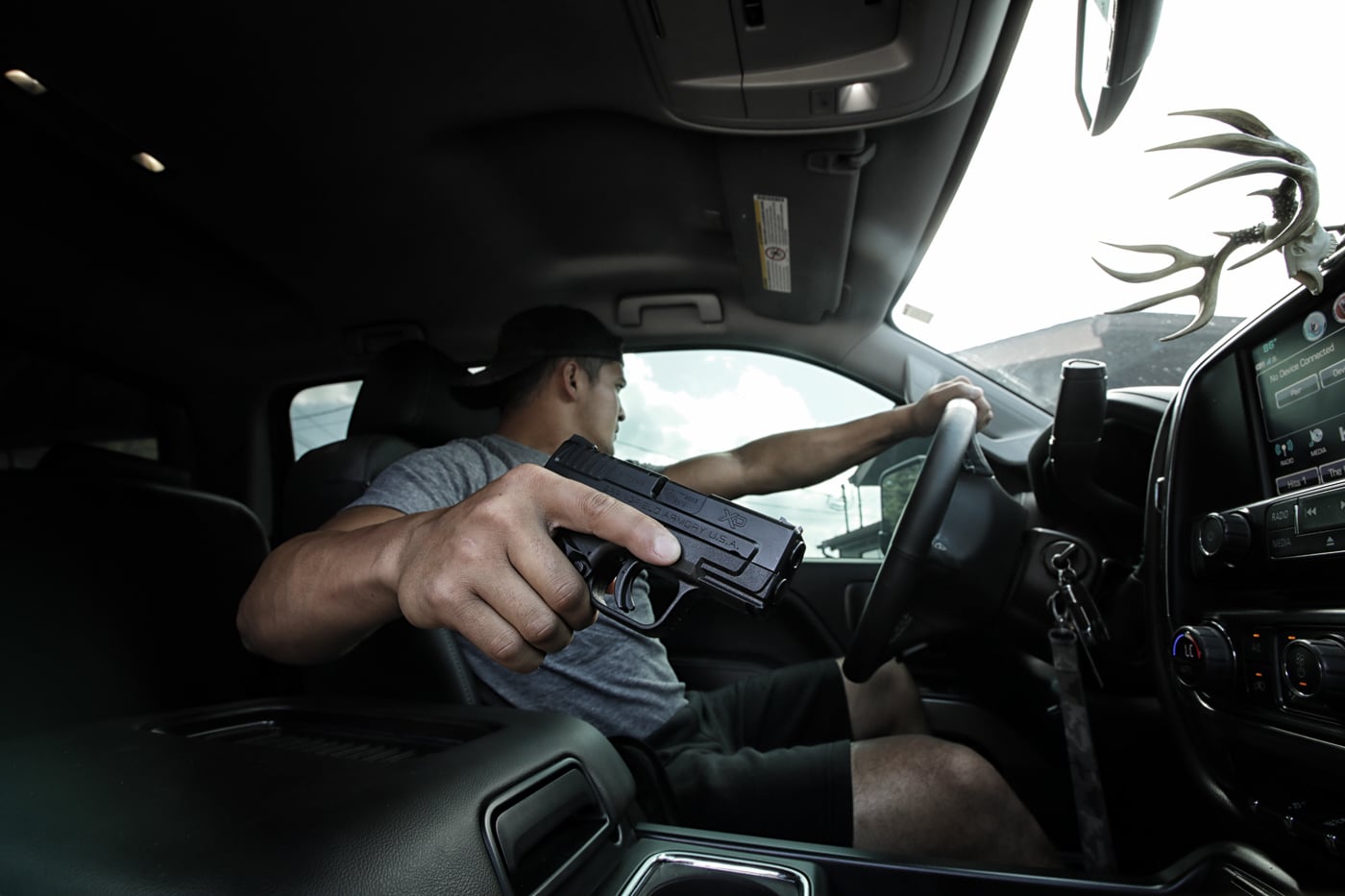
“Repetition is the mother of all skill” is a quote attributed to the hard skills masters of antiquity, dating back to ancient Rome. In meaningful training, the key to competency is nothing more than a countless number of precisely executed repetitions.
Practice makes permanent. As poor, or shoddy practice can create training scars, so does perfect practice (technique executed correctly) make permanent. The greater your competency the greater your confidence. The greater your confidence the lower your stress.
Consistency
The learning process is nothing more than differentiating “right” from “wrong.” The only way to truly learn is by making mistakes. Only by doing something wrong can you know its opposite — doing something right. For example, there are a hundred things you can do wrong when shooting that cause you to miss a target.
However, there’s only one way not to miss a target and that is to align the muzzle with the target and break the shot without disturbing that alignment. Sounds simple until you try to do it. Apply even the slightest layer of complexity such as speed, distance, movement, cost for failure et al and you introduce factors that directly impact your consistency.
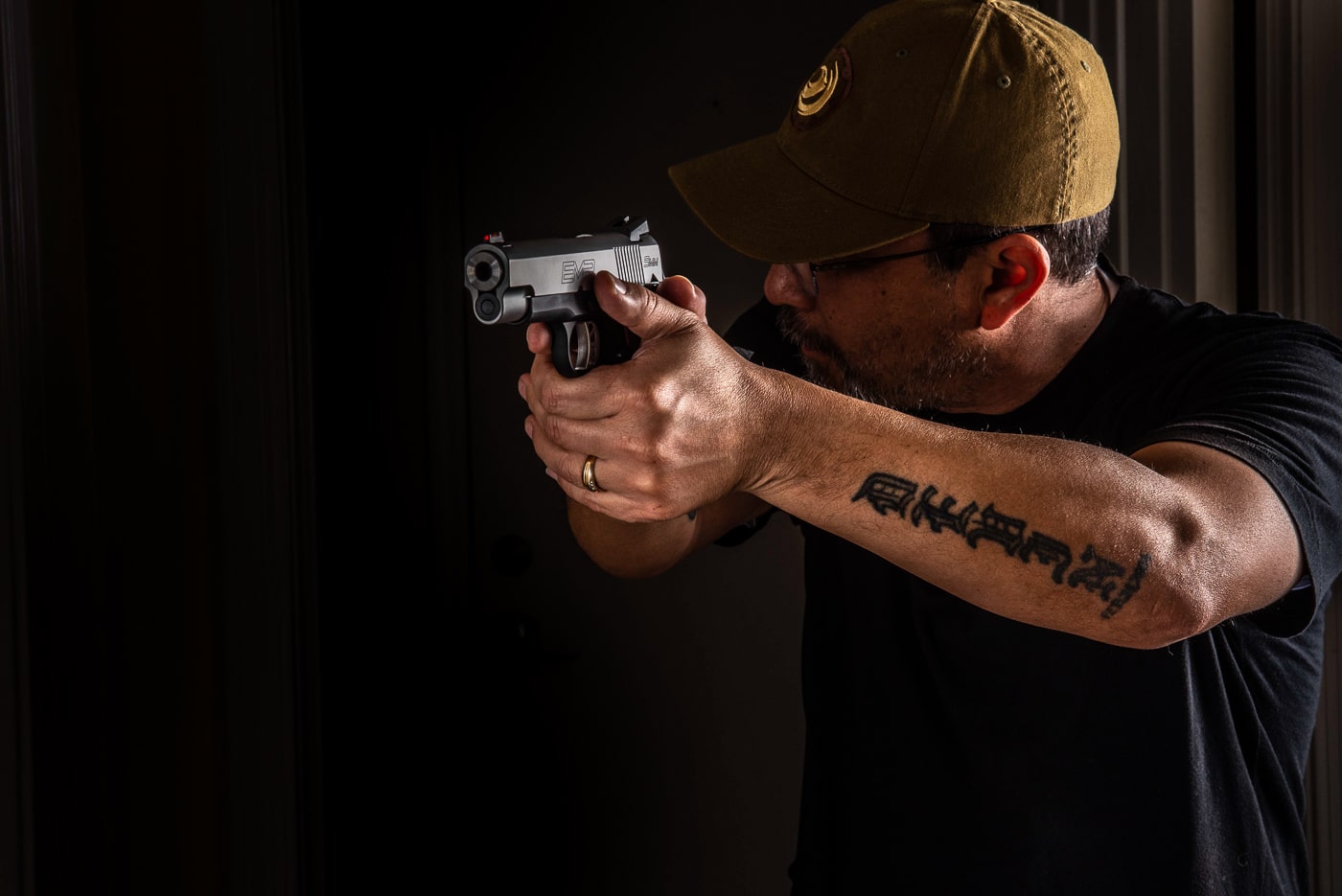
If you’re not making mistakes, then you’re not training for consistency.
Dirty Harry once said, “A man’s got to know his own limitations”. Do you know where is the very edge of your skills envelope? Do you work a specific technique repeatedly pushing the process until your wheels fall off?
How far can you go physically and mentally before you step outside that skills envelope or involuntarily let up on that mental gas pedal? It takes the combination of both physical and mental consistency to perform well under duress. One will not work without the other.
The expert can get it right, but the professional cannot do it wrong.
Building consistency on a solid foundation of competence exponentially increases your confidence, which in turn further attenuates stress.
Inoculation
Place yourself in as close a situation as possible to real world physical violence by avoiding injury in balancing safety and reality of training. Such training methods as “force on force” employed by the military and law enforcement using dye marker cartridges like Simunitions (that can also introduce a pain element feedback to your training), Airsoft or digital electronic/video simulators (like fighter pilots use) that allow you to safely experience conditions similar to what you may experience in reality.
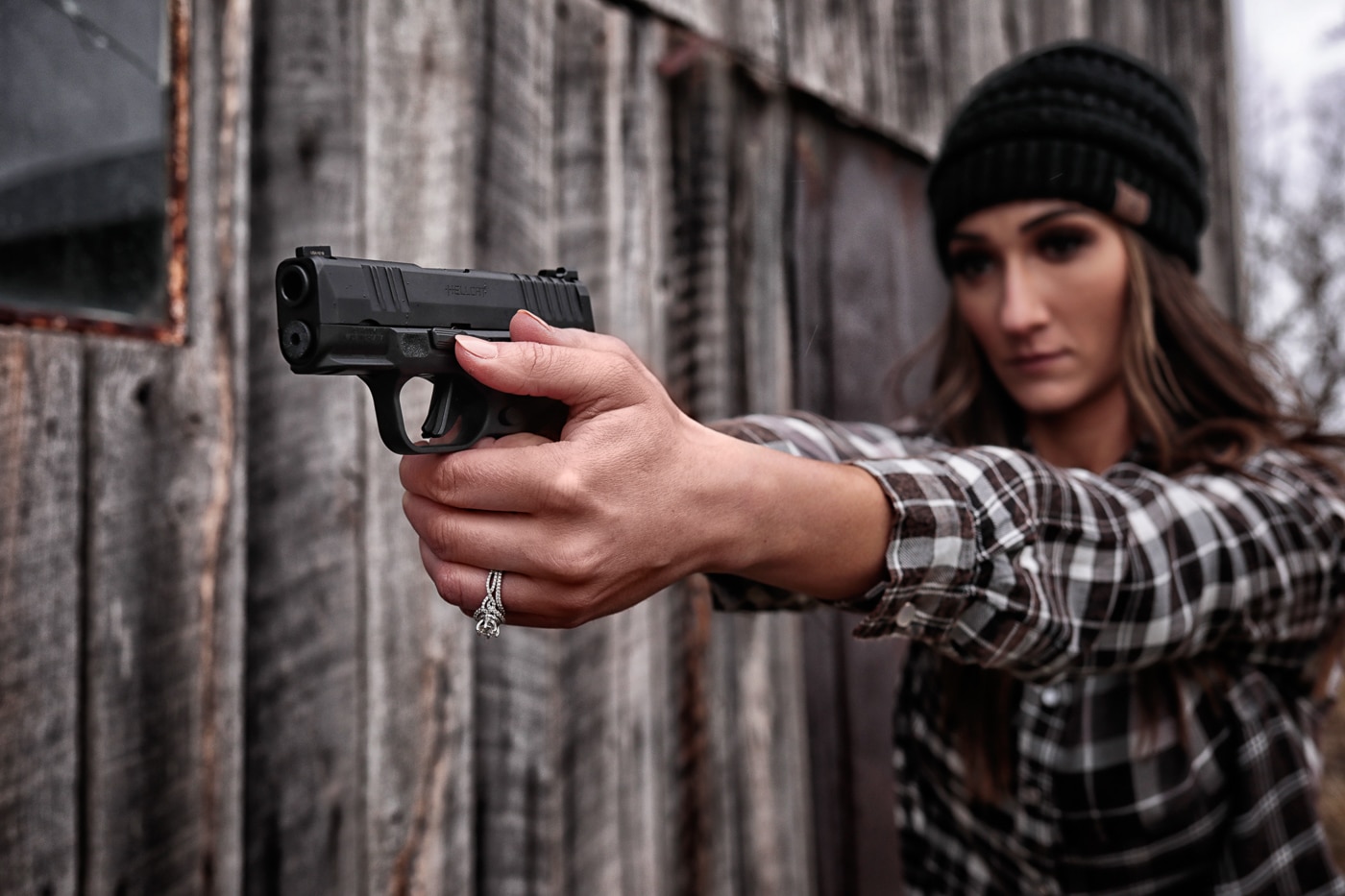
Being mentally inoculated is like hearing the same joke over and over again. The first time you hear a joke it may seem humorous but by the seventh time around it becomes an annoyance. The same applies to your exposure to physical violence via repeatedly placing yourself in similar conditions.
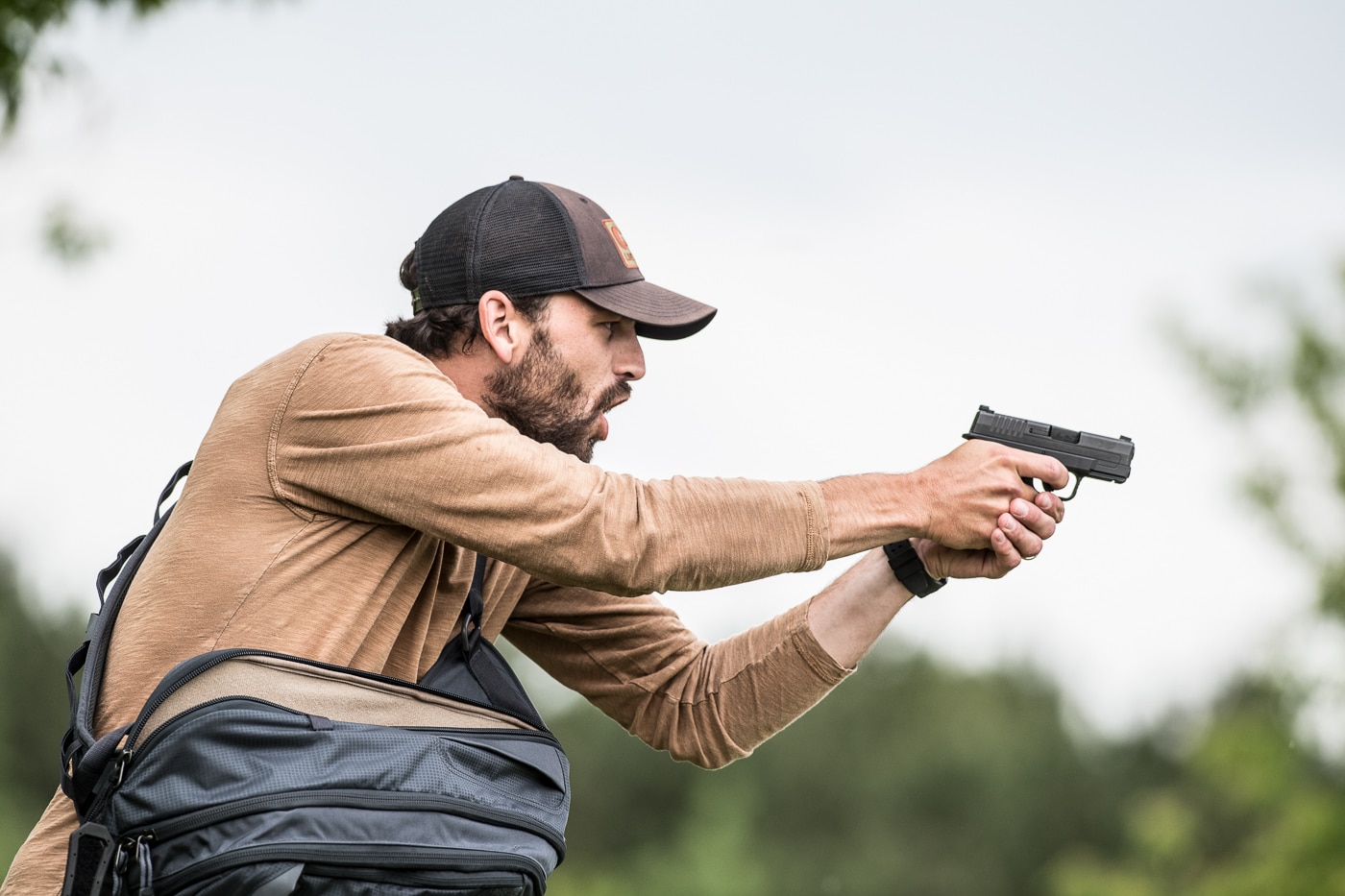
Along with any active threat come three conditions which cause the human mind to become flustered. These are a scenario that is new, unfamiliar and threatening. By the sheer number of repetitions in training and having made more mistakes than not, there’s nothing new. Any such newness is displaced by hard-earned competency. Pushing the edge of your skills envelope creates a new and expanded comfort zone of familiar ground where there is no longer anything unfamiliar. Inoculating your mind against threatening situations attenuates the tendency to become flustered.
Conclusion
Replacing new, unfamiliar, and threatening with competency, consistency, and inoculation are what allow you to go into action with the greatest speed which a man’s muscles are capable, but mentally unflustered.
100-Year-Old Veteran on Live TV: We Fought WW II for Nothing, Britain Less Free Than in 1945
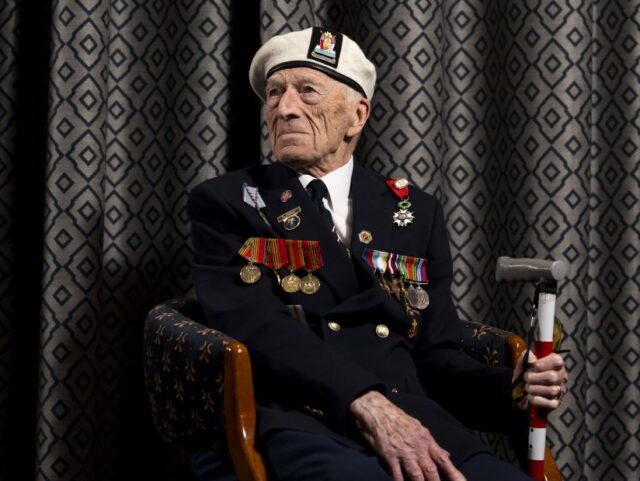
A centenarian Royal Navy veteran took full advantage of an appearance on live television to express his sorrow at the state of modern Britain, saying he and his comrades fought for freedom that has been frittered away, eliciting what critics called a “patronising” response by show hosts.
Royal Navy and Arctic Convoy veteran Alec Penstone told Britain’s ITV breakfast show “the sacrifice wasn’t worth” what the country has since become, mourning the loss of freedom he and his friends fought and died for.
Appearing on Good Morning Britain on Friday for a segment on the upcoming Remembrance Sunday and Armistice Day on November 11th, Penstone was asked what the events commemorating fallen troops from the two World Wars meant, and what his message to the country now is.
Far from the feel-good sentiments the piece had evidently been set up for, 100-year-old Penstone remarked: “I can see in my mind’s eye those rows and rows of white stones.
“All the hundreds of my friends, everybody else, who gave their lives. For what? The country of today. No, I’m sorry, the sacrifice wasn’t worth the result that it is now.”
Comedian Adil Ray, best known for creating Citizen Khan, a BBC comedy about a “British Pakistani” family living in “the capital of British Pakistan” — Birmingham, England — quickly interjected to ask of the veteran: “what do you mean by that, though?”.
Penstone continued: “what we fought for was our freedom. We find that even now, it’s a darn sight worse than what it was when I fought for it”.
Ray’s co-host Kate Garraway, a former journalist and news presenter, placed her hand on Penstone’s shoulder and reassured him that people of her generation did appreciate the sacrifice of the veteran and his friends, before announcing that he was to be presented with a compact-disc of Second World War-era popular music in thanks.
British academic Professor David Betz was among those responding to the turn of events, calling Penstone’s remarks “heartbreaking” and the response from the television hosts “patronising” and “simply infuriating”.
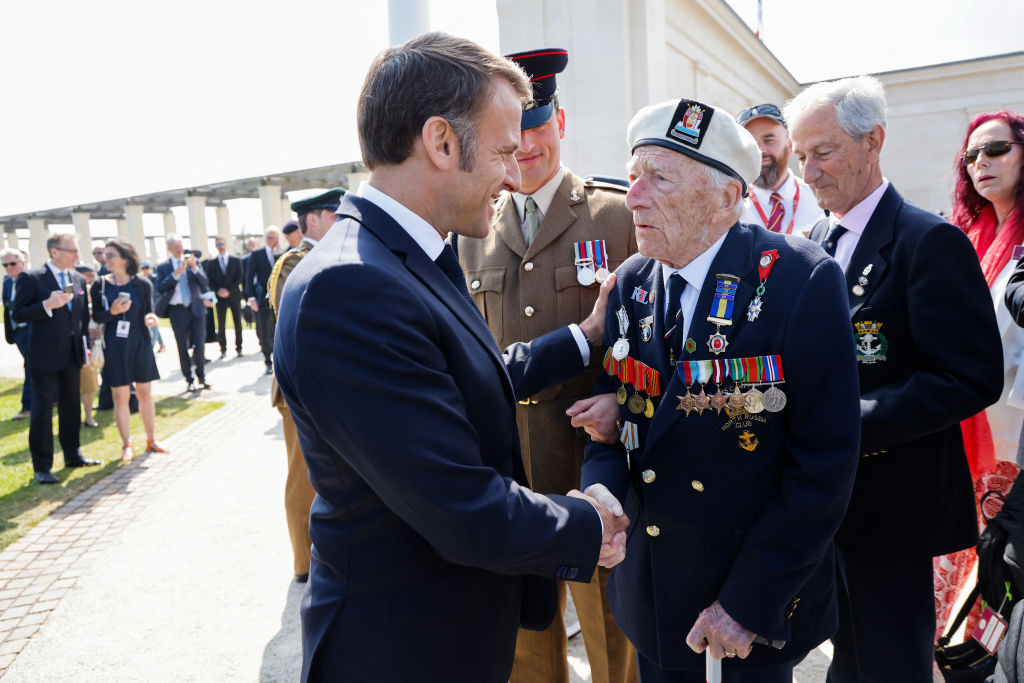
France’s President Emmanuel Macron (L) greets 98-year-old British D-Day veteran Alec Penstone during the UK Ministry of Defence and the Royal British Legion’s commemorative ceremony marking the 80th anniversary of the World War II “D-Day” Allied landings in Normandy France, on June 6, 2024. (Photo by LUDOVIC MARIN/POOL/AFP via Getty Images)
According to a profile by the Royal British Legion, a prominent veterans organisation, Penstone was a young man when the Second World War broke out and initially volunteered as a messenger for the Air Raid Precautions organisation in London during the height of the Blitz.
He said of his time in London during some of the worst bombing of the war: “The moments at 15 years of age, pulling bodies out of bombed buildings you grow up very quickly.”
His father, a veteran of the Great War, made Penstone vow not to serve in an infantry role due to the horrors he’d witnessed in the trenches in the Great War. So he joined the Royal Navy as a submarine-detector, and ended up in one of the most deadly assignments of the Second World War, on the Arctic Convoys. He also served in mine sweeping to clear the sea ready for the D-Day landings, and in the far east, fighting Japan.
The Imperial War Museum states of the Arctic Convoys delivering materiel to the Soviet Union to help them fight Nazi Germany:
Conditions were among the worst faced by any Allied sailors. As well as the Germans, they faced extreme cold, gales and pack ice. The loss rate for ships was higher than any other Allied convoy route.
Over four million tons of supplies were delivered to the Russians. As well as tanks and aircraft, these included less sensational but still vital items like trucks, tractors, telephone wire, railway engines and boots.
While appearing on television today, Mr Penstone was seen wearing the distinctive white beret and badge of the Arctic Convoy Club, a veterans organisation for survivors which disbanded in 2005, given it had so few surviving members.
On his left breast he wore a rack of British medals from his war service including the 1939-45 Star, the Atlantic Star, the Arctic Star, the Pacific Star for service in Burma, and Defence Medal for his service in the ARP.
Separately on a red ribbon, Penstone wore the insignia for a Knight of the Légion d’honneur for role in liberation of France. In 2024, Penstone was personally greeted by French President Emmanuel Macron and thanked for his service.
On his right breast, Penstone wore several Russian Medals including Medal of Ushakov for convoys, and USSR-era convoy medals.
While these are not authorised for wear by Britons in uniform, it is normal practice for British veterans of the Arctic Convoys to wear them on the right breast in this way.

Congress passed the National Firearms Act of 1934 in response to the scourge of the motorized bandit. Dillinger, Barrow, Van Meter, Capone, and others both captivated and terrified the American public. In the face of the media-fueled canard of hypothetical machinegun-toting criminals lurking behind every bush, legislators decided that something simply had to be done.
That something leveraged the taxation powers of the US Congress to effectively end commerce in machineguns, sound suppressors, short-barreled long guns, and destructive devices like cannons and hand grenades.
There is some curious cognitive dissonance at work here. The astute observer will note that the 1st and 2d Amendments to the US Constitution are next door neighbors. The 1st Amendment says, “Congress shall make no law respecting an establishment of religion, or prohibiting the free exercise thereof; or abridging the freedom of speech, or of the press; or the right of the people peaceably to assemble, and to petition the Government for a redress of grievances.”
The courts have interpreted the 1st Amendment to protect, among many other things, pornography in most of its many-splendored Information Age forms. Leave the kids out of it and use consenting adults and images depicting rape, assault, and violent dismemberment distributed via the world’s most advanced digital media are all constitutionally armored up against puritanical molestation.
By contrast, there are places where an American citizen’s constitutional right to own a firearm is restricted into irrelevancy. If we applied the same filters to the 1st Amendment that we do to the 2d, the only speech that would be truly protected would be whatever you might be able to conjure up using an 18th-century steam-driven printing press.
For the sake of discussion, let us ponder a different world—a world that is truly free and unfettered as the Founders clearly intended. Let’s imagine a scenario wherein you don’t need some kind of government writ to drive a car, build a shed, buy a gun, or cut somebody’s hair.
Let’s visualize a hypothetical America without the recognized fifty-four volumes of US Code with its more than 300,000 individual federal laws. In short, let’s fancy firearms without the artificial restrictions imposed by the NFA. What would the ideal home defense gun look like if there truly were no rules?
The Mission

There are 148 million total housing units in the United States. There are roughly one million reported home invasions each annum. That means there is a 1-in-148 statistical chance that your home will be violated in any given year.
The current life expectancy for an American male is 78.4 years. Women live longer than men for obvious reasons. Their life expectancy is a bit north of 81 years.
Statistically speaking, half of all Americans will experience a home invasion over the course of the lifetimes. Some neighborhoods are obviously worse than others, but those are the numbers.
As such, home defense guns are not just marketing hype. Precious few among us can afford a 24/7 live-in cop. How on earth would you keep him in doughnuts? As a result, free folk assume responsibility for our own security. That means a proper home defense arm.
Unlike carry guns, this hypothetical weapon need not be concealable. Weight is a consideration, but not a big one. You won’t be humping this thing on a 15-mile ruck march. It just needs to be sufficiently maneuverable to move easily within the home. So, let’s get started.
Cartridge and Caliber

Caliber selection is not as straightforward as you might think. While there are hundreds if not thousands of options ranging from .22 rimfire up through .50 BMG, caliber selection for the ideal home defense weapon really distills down to either 9mm Para or 5.56mm with a few die hard .45ACP acolytes sprinkled over the top for flavor. The performance of these cartridges in a home defense scenario is a bit counterintuitive.
The concern is typically overpenetration. The reason so few folks opt for the .50BMG round as a home defense tool is that John Browning’s massive counter-balloon cartridge will penetrate end-to-end through most shopping malls. When precious people might be hiding behind a few flimsy sheets of drywall, overpenetration becomes a concern. To a degree, modern technology actually makes that worse.

Most modern high-tech pistol-caliber social bullets spawn from research driven by Law Enforcement. The ideal cop bullet expands reliably but is barrier blind. This means that these souped-up bonded projectiles remain intact when passing through such stuff as clothing, glass, or wall board. That can result in excessive penetration for the responsible home defender.
Recommended
By contrast, those zippy little high-velocity 5.56mm rounds typically go insane upon contact with common building materials, spending their energy expeditiously without punching too deep.
The downside is muzzle blast and noise. Rifle rounds of any sort, particularly when fired out of short barrels, will reliably produce an earth-shaking report while lighting up the night. These are all simply data points in our decision tree. However, I’d still opt for 9mm myself and just maintain my situational awareness.
Barrel Length and Buttstocks

We’ll start with a long gun, because pistols are horrible. Most of us carry them regularly, but a traditional handgun is the toughest of all common firearms to run safely and well. It is innately imprecise in the hands of anyone but a trained professional. We use handguns because rifles are tough to hide underneath shorts and a t-shirt. For home defense purposes, we will start with something that has a decent buttstock.
The original text of the 1934 NFA purportedly included handguns for that onerous $200 tax. Realizing that enterprising Americans would simply cut down their long guns if handguns were banned, the barrel length restrictions were codified in the law.
Handguns were dropped to get the vile thing passed, and nobody thought to get rid of the barrel length dicta. That’s why you can walk out of your local gun emporium with a pocket pistol cash and carry, but cutting the barrel down on grandad’s single-barrel 12-bore to 17 inches can get you ten years in the Big House. If none of that existed, home defense guns would all have short barrels.
How short that barrel gets is always a compromise. The shorter the tube, the slower the bullet and the more egregious the muzzle flash. Longer barrels are more accurate and hard-hitting but tougher in tight corners. Ideally, I’d say eight to ten inches for a pistol-caliber gun is a good compromise.
Sound Suppressors

Of course the ideal home defense arm will have a sound suppressor. It is asinine that we encumber suppressors with so much artificial legislative baggage. You can buy rimfire cans without any ancillary registration in France, of all places. That’s just embarrassing.
Sound suppressors on a gun that is intended to be used indoors are simply intuitive. Nothing about a sound-suppressed tactical firearm is truly silent, but the inclusion of a quality suppressor makes it easier to communicate. The diminution of muzzle flash also enhances both accuracy and control.
Suppressors can be either integral or removable. Removeable cans are just that. Integral suppressors in a 9mm platform often incorporate ported barrels that drop standard supersonic rounds into the subsonic range. In the world of sound-suppressed pistol-caliber firearms, this is as good as it gets.
Giggle Switches

All serious close combat weapons should have selective fire capability. A four-position selector offering a three-round burst option is even better. That having been said, while the option should be there, serious gunmen almost never use it.
The 22d SAS operators who cleared Princes Gate in London in 1980 purportedly terminated most of those Iranian terrorists with a full auto mag dump apiece from their MP5’s. That means not having to say you’re sorry in any of the world’s recognized languages. However, not many of us can run a gun quite so well as might your typical SAS operator.
Serious professionals nowadays train to put semiauto double taps onto their targets in an expeditious fashion. So long as Level III body armor is not in play, this will reliably do the deed. However, retaining the full auto option, especially in a placid pistol-caliber gun, is a no-brainer.
It is Alive!

So, what does that hypothetical ideal home defense weapon actually look like? I would propose that it doesn’t actually exist. In my experience, the HK MP5SD is the most controllable, most precise CQB tool on Planet Earth. However, HK launched the MP5SD in 1974. The gun is overly complicated, it’s old, and it doesn’t readily lend itself to optics or accessories.
The HK UMP launched in 1999. If you haven’t had the pleasure, the UMP (Universal Machine Pistol) is the Glock of submachine guns. It sports a polymer chassis and weighs about five pounds. The UMP is readily configurable between 9mm, .40S&W, and .45ACP while offering a sedate rate of fire and superlative ergonomics. However, it is not integrally suppressed. The UMP will take a can, but only the detachable muzzle sort.

So, in a world without rules, I would approach our buddies at Oberndorf and ask them to build me an integrally-suppressed UMP in 9mm with a ported barrel that rendered standard 9mm rounds subsonic. I’d outfit that hypothetical gun with a combination white tactical light/green laser and a top-flight red dot or Holosight.
I’d secure it against little fingers and stage the gun alongside a couple of spare magazines where I could get to it quickly. Then I’d sleep well knowing that my castle was defended by the finest home defense weapon mankind could contrive.
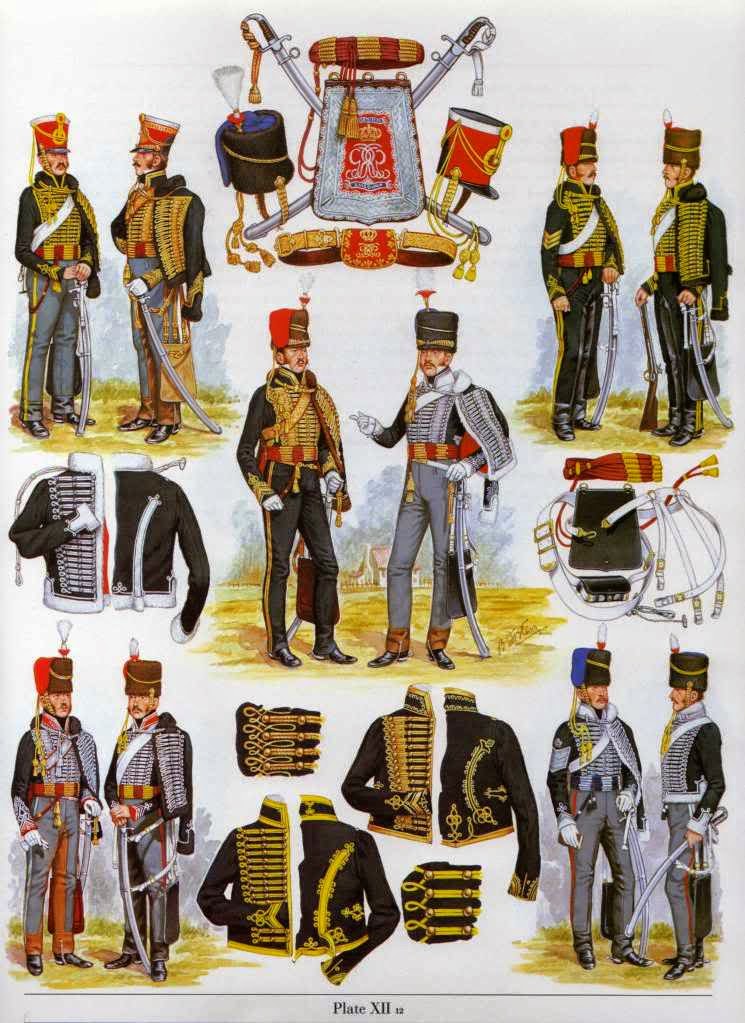
15th The King’s Hussars




